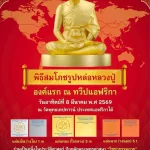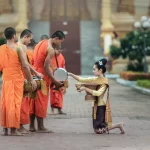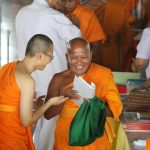Getting to know
Mind is the hub of every move.
The true happiness, life can shelter under its roof.
And the Mind only can do the proof.
Life is always in action along the venue of rise and fall, love and hatred, despair, hopeless or hopeful. Some moves would drain our energy, but some moves give. We cannot say that life is only happiness or being covered with pain. The truth of life is fluctuating, swinging, swaying, betraying, or unexpectedly up and down. And mostly it is up to the external factor.
And be noted that the external factor normally weaves the web of inter-twining action to our internal. It is the mind. Then the mind that is the hub of everything is always in the situation unstable, tiring and restless.
It is proved that life is a two-way traffic i.e. external and internal, outside and inside. Mostly we cannot control the external, the outside factors or situations, but the mind we may, because it belongs to us. It is our inside. It is ours.
Luckily, Buddhist Philosophy has taught us to control and conduct the mind. All aim to lead the living way of life to the track of real peace and happiness. Absolutely, yes, it is “Meditation.”
To meditate, firstly is to learn how to still the mind on the point that is best balanced. It is the station of non-defile. Secondly is how to lead the mind to go deeper along the track of real peace. It is the Middle Way. The one and only way that leads to the real awakening and finally to the true enlightenment.
The Middle Way is the way that connects nibbana, heaven and earth as one.
Meditation in action will be in sudden at the gateway or at the first touch of the station of stillness, and, then, certainly, regularly, step by step all along the Middle Way. It is up to the mind that practices well or not.
The Middle Way is the real living way. It is the only existing principle of Buddhism of The Lord Buddha.
And be noted that real awakening or true enlightenment will be possible only by Dhammakaya as Lord Buddha said, “He who sees the Dhammakaya, is he who gets in touch with me, Thatagata.” (Thatagata is the name Lord Buddha called himself.)
Meditation in action will be touchable as soon as you touch or feel the station of stillness and it will be sharper and sharper in every inch you insert your mind deeper in The Middle Way.

THE STATION OF STILLNESS: THE CENTRE OF THE BODY
"Being still at the centre of the body is to be seated on the throne of happiness."
It is the great words of the renown Buddhist monk, Phramonkolthepmuni (Luang Por Wat Paknam Pasi Charoen) or we call him in the beloved name “Luang Pu”.
Luang Pu is the one who laid his life down on the condition of gaining the truth of The Lord Buddha.
Eighty-nine years ago, Luang Pu, at the age of 33, had sat down in the posture of meditation and made a vow that he would never arise up again if he could not find the truth of the Lord Buddha. And with his strong determination but gently he did his meditation, he revealed the only path and the body of supreme truth, The Middle Way and The Dhammakaya. The Buddhist truth that had been lost for about two thousand years ago or around 500 years after the Lord had made his great nibbana (had passed away).
With his great work of meditation that day, he found the station of stillness or the gateway of the Middle Way. It is at the centre of body. The Centre of our body is the gateway of the Middle Way. And, absolutely, the centre of the body is the station of stillness that any meditation practitioner should lay or should still the mind down upon.
Yes, we can say that to meditate is firstly to state the mind on the centre of the body.
And then, where is the real point of that centre and how to trace it? Now, it is the right time to explore.
Luang Pu said the track that leads to the centre starts from the nostril of whom who wants to trace, male is at the right one and female is at the left. And along the track, from the start to the final end, there are seven bases to stop or to pause the mind (or the feeling) there, each only once for a while.
The Re-discovery of The Middle Way
“The Middle Way” concept of meditation became lucid and more practical to meditation practitioners again in 1917 after the attainment of “Dhammakaya” of Luang Pu Wat Paknam (The late Abbot of Wat Paknam), a renowned Buddhist Monk and a celebrated Meditation Master.
Luang Pu is the one who laid his life down in the condition of gaining the supreme truth of The Lord Buddha. In 1917, at the age of 33, he had sat down in the posture of meditation and made a vow that he would never rise up again and sat till death if he could not find the supreme truth of the Lord Buddha. And with his strong determination, he meditated the whole night until he finally revealed the real path and the body of supreme truth, “The Middle Way and The Dhammakaya”.
Introduction to Meditation: The Ancient Concept of The Middle Way
“The Middle Way” is one of the most ancient concepts of meditation in the world even before the Buddha time. Long lost to humanity, it was rediscovered by Buddha more than 2,500 years ago.
Lord Buddha referred to “The Middle Way” as a path that leads to enlightenment by avoiding the two extremes of sensual indulgence and self-mortification. And from avoiding both extremes, one will gain vision and knowledge that leads to Peace, Supreme Knowledge and Enlightenment.
However, according to many well-known Meditation Masters, the real knowledge of meditation practice on the path of “The Middle Way” had been lost from this world for about 500 years after the passing away of the Lord Buddha.



